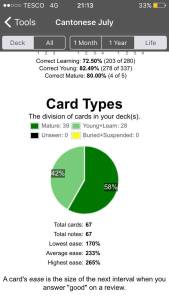Can you learn 1500 characters in 3 months?
Is it possible to learn 1500 Chinese characters? The simple answer is yes. However, the sheer thought alone of having to learn thousands of characters is enough to scare most learners away from even attempting Chinese in the first place.

Images come up of writing out a bunch of unconnected drawings and squiggles hundreds of times to no avail, constantly forgetting and struggling in an uphill battle.How is it possible to learn in 3 months what takes native speakers up to 5 years to master?
So for me to come along and say it’s possible to learn 1500 Characters in 3 months may seem like a mad claim, but to understand better, first we need to ask ourselves a few questions.
Firstly, do you even need to learn Chinese characters at all?
This may seem like a redundant question, especially considering you are already reading a post about how to learn characters, I can assume you have made up your mind already. But defining your goals and knowing why you are doing them is an important step to take when taking on a challenge as big as this.
So, do you need to learn them? This very much depends on your current goals and objectives. I know a few people that have learnt spoken Chinese to a very high level without even touching characters, and to some this is enough. This is possible through romanizations of the language (such as Pinyin for Mandarin), listening to dialogues while reading the Pinyin and then practicing them in conversation. This is a shortcut to being able to speak fast and certainly one I used when I first started to learn Chinese.
But is it possible to achieve native like fluency? Again, the answer is yes but you have to think about the practicality. Achieving true fluency requires an incredible amount of exposure and without characters on your side you are depriving yourself of all written forms of the language having to solely rely on audio input when accessing native level content.
If on the other hand, you learn the characters. Then you can watch videos with Chinese subtitles, text your friends, read books, visit forums and much more. Essentially you can transform your whole life and shift it into your target language offering significantly more exposure than you could ever get with audio input alone. This enhanced input and immersion is the key to becoming fluent in as short a time as possible past the intermediate stage, through a large volume of compelling interesting input.
On top of this, you get to access the real language, and be able to dive into thousands of years of history building up the complex writing system today.
What is a Chinese Character?
So you agree that learning Characters is the right way to go and you are ready to dive in and get started. Hurry up and get to the point, how do we learn them so fast already!!
Well in order to understand this first we need to talk a little bit about what is a Chinese character. It’s obvious right? Each character carries its own unique meaning and pronunciation. They all come together to make words and the entirity of the written language. But how does that tell us how to learn them?

Well in order to say that, we need to go in a bit further. You see Chinese characters, despite what you may believe, aren’t a bunch of unconnected squiggles, they are all connected. You see they are made up of smaller building blocks, called radicals. There are about 200 over all.
These simple components each have their own meaning, and come together with other components or radicals to form what we call characters. So because all characters are based on smaller ones as well as various components. This means the more you know the easier it gets. At a certain point you are just combining radicals you already know in different ways to form a new character. This is kind of like how we arrange letters to form words.
Let me give you an example, take the common character 好, which means good.
This is made up of two components, 女 which means woman. and 子 which means child.
From these smaller building blocks we can put them together to make a story and associations in our brain. This relates new information to what we already know forming the basis of all mnemonics.
So in this example we have, the component for “woman” and “child” coming together to make “good”. From this we can invent stories. Such as, we can imagine a happy family, a man with his woman and child. He will always be good to them, he will put them first because they are his family.
This helps build up a mental image in your head associating the smaller components to the character we are trying to learn, using imaginative memory instead of rote learning. This in effect, is the cornerstone of how to learn quickly and is what we will build on in the next section.
The Heisig Method

Starting with the smaller components and radicals, using imaginative memory and building up your knowledge of characters in a logical structured order to go through the most common characters encountered in every day life. This is the basis of the Heisig method and it is split into two parts. Book 1 covers 1500 characters which should be enough to read roughly 90% of written Chinese, and the second book covers an additional 1500. With all 3000 characters together this should be enough to read approximately 99.5% of written Chinese (see Page 8 paragraph 2 for reference) giving you a strong foundation to read anything!.
This is all done learning the characters one by one and associating them with a key meaning and is also done separate to the pronunciation, as that can come later. This book combined with one other thing will let you learn how to read and write characters at an alarming rate.

The second thing you will need is an SRS, spaced repetition system (my favorite is Anki). SRS is a flashcard system designed on memory research following the forgetting curve. What this means, is that every time you are about to forget something the SRS reminds you and you review it at increasing lengths of time until eventually it sticks into your long term memory.
For example you learn a word on day 1, you will forget it after 10 mins. Then every time you relearn it, the time in which you will forget increases to an hour, then a few hours, days, weeks and so on.

The combination of imaginative memory combined with SRS technology is an incredibly more efficient way to learn because you are using your mind to conjure up strong links and then using the SRS system to make sure you are reviewing stuff you need to learn, in a time efficient manner.

Another point is that Anki has features inside the app that allow tracking of deck progress and to what degree you have memorized them. This makes it really easy and useful to see just how many characters you have learned so you can adjust your method to meet your goals.
The Game Plan
It is worth mentioning that there are actually two types of character system used for Chinese, the traditional characters (used mainly in Hong Kong, Taiwan and Macau) and the simplified characters (used primarily for mainland china).
There is a set of books for each and the ones I will be tackling are the traditional characters. So with that out of the way time to go into detail about what exactly I will be doing over the next 3 months and how I plan to use the tools listed above.
So because I have a goal and a time frame, I can plan accordingly and calculate exactly how many characters I need to learn each day. In the morning before work I will learn 10 characters and when I get back from work I will learn another 10 following the method used in the book. I will do this for two days and then on the third I will learn 10 in the morning and leave the spot after work to make sure I keep reviewing old content (this will also give me some leeway should anything come up or go wrong). Therefore across a three day period I will be reviewing a total of 50 characters. Across 3 months (or 90 days) this will add up to the total of 1,500 characters.
Once I have gone through the characters in the book I will enter the data into my flashcards (Anki). I will put the core meaning, followed by the jyutping (I am learning Cantonese, if you are learning Mandarin then you will be using Pinyin) and the story on side 1, and the character itself on side 2. Then I will carry around a small book with me and a pen and any time I have a spare few minutes I will take out the book, and using the prompt on side 1 try to reproduce the characters from my memory.
Apart from that, once I have acquired enough I will start trying to use them by reading and texting with friends.
And that’s it. Simple right? If I keep this up consistently across the 90 days I am sure I can reach my target of hitting 1500 characters in 90 days.
Conclusion
If you follow the steps in this guide you will pick up learning how to read and write Chinese at an alarming rate. That being said, there are a few drawbacks to this method. The first is that you are learning characters out of context. While this is a definite shortcut to being able to read and write, you will still need to do additional work to fill in the links and connect everything together. However, this can only be done through mass exposure and time with the language. This is just a first step to facilitate that.
I know some people don’t like the Heisig method for that very reason so let me know what you think in the comments. Have you tried learning characters before? Do you like the Heisig method, or do you think there is a better way?


